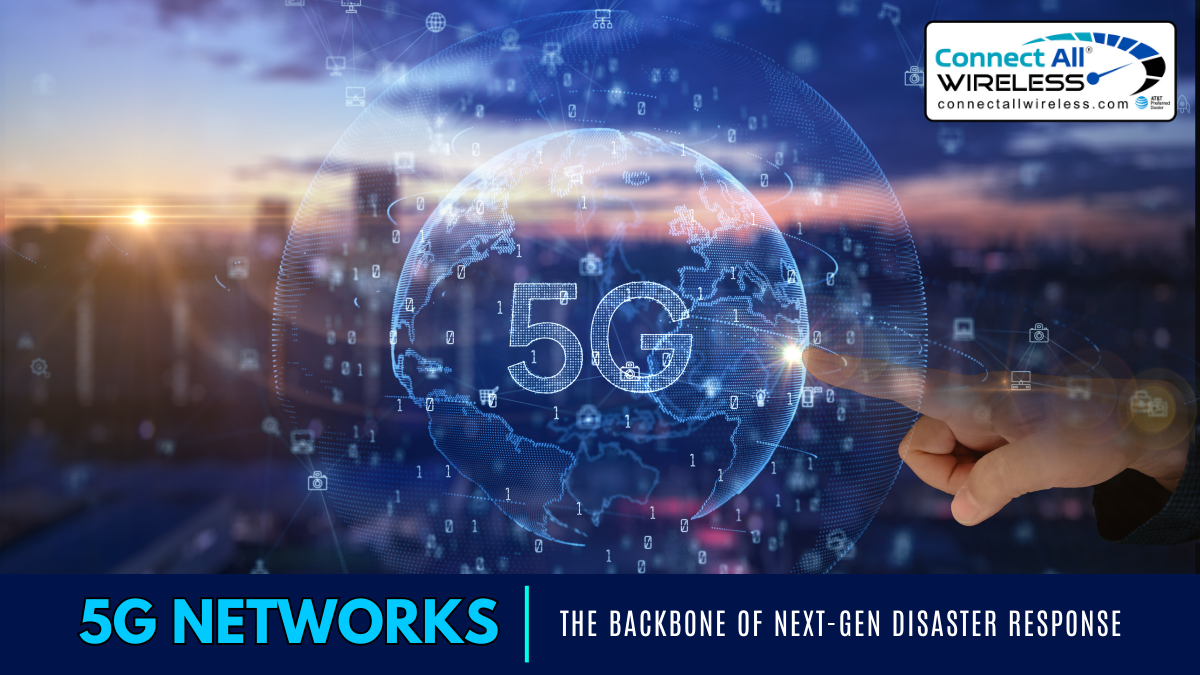In an era marked by unprecedented technological advancements, the integration of 5G networks has emerged as a revolutionary force, transforming various facets of our lives. Beyond enhancing download speeds and connectivity, 5G is poised to play a pivotal role in disaster response, ushering in a new era of efficient and rapid emergency management. This article explores the ways in which 5G networks serve as the backbone of next-generation disaster response systems.
1. Ultra-Fast Communication and Data Transfer
At the core of 5G's impact on disaster response is its unparalleled speed. Traditional communication infrastructure often buckles under the pressure of large-scale emergencies, hindering timely information exchange. With 5G, communication becomes virtually instantaneous. Emergency responders can share critical information, coordinate efforts, and make swift decisions in real-time. The ability to transfer massive amounts of data rapidly enables more efficient resource allocation and better-informed decision-making during crises.
2. Enhanced Connectivity for Remote Areas
Disasters frequently strike in remote or challenging terrains, making it difficult for traditional communication networks to provide reliable connectivity. 5G's deployment in these areas can bridge the communication gap. By extending high-speed connectivity to remote locations, emergency responders gain access to crucial data and can establish communication networks where they are most needed. This newfound connectivity is particularly vital for reaching communities in distress and coordinating rescue operations in areas with limited infrastructure.
3. IoT and Sensor Integration for Real-Time Monitoring
The Internet of Things (IoT) and sensor technologies are integral components of modern disaster response. With 5G, these technologies can reach their full potential. The high data transfer speeds and low latency of 5G enable real-time monitoring through a vast network of sensors. These sensors can detect changes in environmental conditions, monitor infrastructure stability, and provide crucial information for predicting and responding to disasters. The integration of 5G with IoT significantly enhances the accuracy and speed of data collection, empowering emergency responders with timely and relevant information.
4. Augmented Reality (AR) for Enhanced Situational Awareness
5G's low latency and high bandwidth pave the way for augmented reality applications in disaster response. AR technologies can overlay critical information onto the real-world environment, providing emergency responders with enhanced situational awareness. From visualizing disaster-stricken areas to accessing building blueprints, 5G enables the seamless integration of AR tools, facilitating more effective decision-making and response strategies in the midst of chaos.
5. Remote Telemedicine for Immediate Healthcare
During disasters, access to immediate medical assistance is often a matter of life and death. 5G's low latency and high-speed connectivity empower the deployment of remote telemedicine solutions. Emergency medical professionals can remotely assess and treat patients in real-time, even in areas with limited healthcare infrastructure. This capability is particularly valuable for addressing medical emergencies in the aftermath of disasters when traditional healthcare systems may be overwhelmed or inaccessible.
Conclusion
In conclusion, the advent of 5G networks marks a transformative leap in the realm of disaster response, positioning itself as the indispensable backbone of next-generation emergency management. The seamless communication, ultra-fast data transfer, and enhanced connectivity capabilities of 5G are pivotal in addressing the challenges posed by natural or man-made disasters.
The integration of the Michigan 5G Network exemplifies the state's commitment to leveraging cutting-edge technology for the safety and well-being of its residents. By enabling real-time communication, IoT-driven monitoring, augmented reality applications, and remote telemedicine, Michigan's investment in 5G technology ensures that emergency responders are equipped with the tools needed to navigate crises swiftly and effectively.
As we witness the increasing frequency and intensity of disasters, the Michigan 5G Network stands as a beacon of resilience, reinforcing the state's preparedness and ability to respond with agility in the face of adversity. The marriage of advanced connectivity and disaster response not only enhances the safety of communities but also exemplifies the potential for technology to be a driving force in safeguarding lives during times of crisis. Michigan's embrace of the 5G revolution underscores a commitment to building a more resilient and responsive future for disaster management.

